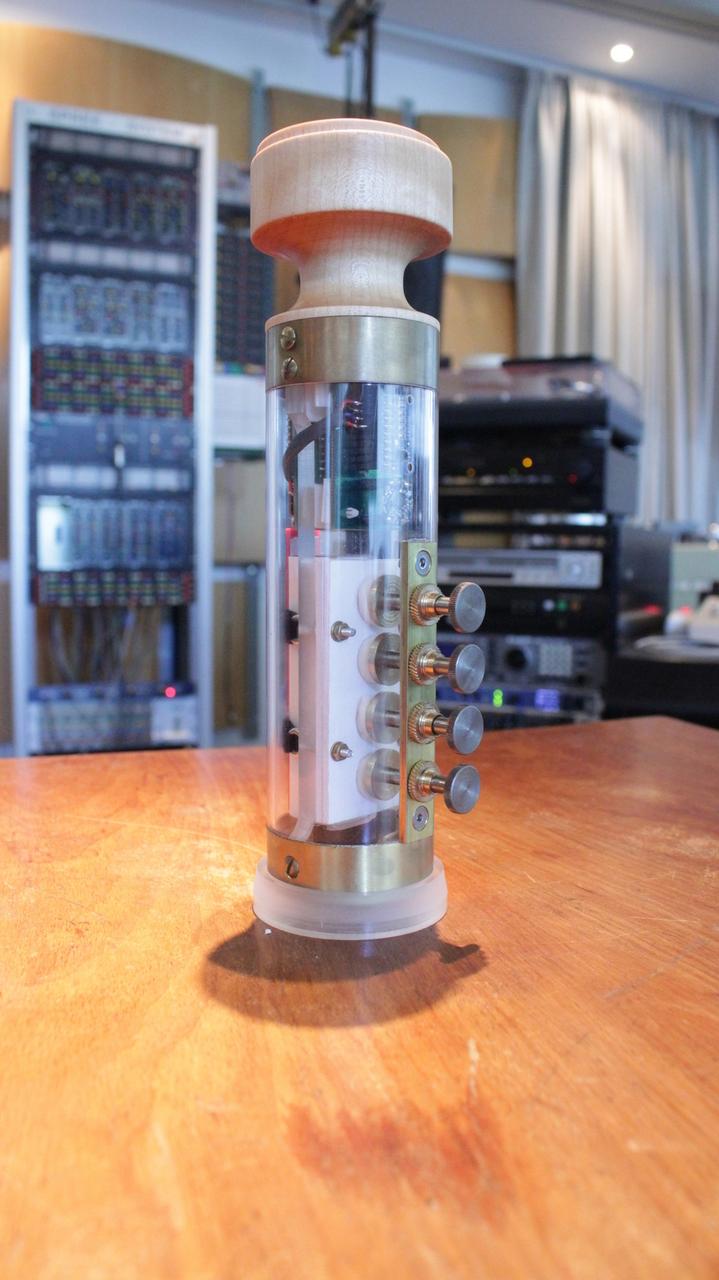BinBong
The BinBong is a haptic musical interface, initially designed as an expressive tool for controlling monophonic synthesizers for melodic play. It is equipped with various force-sensing resistors and an inertial measurement unit (IMU) for tracking the orientation in space. The interface has been developed in collaboration with the SIM (Staatliches Institut für Musikforschung). Dr. Thomas Lerch, head of the restoration workshop, used materials and techniques from classical instrument building to create high quality mechnical components.
First Prototype
The first prototype was designed and manufactured within a master's theses Entwicklung und Evaluation eines Controllers zur Tonhöhensteuerung über Vier-Finger-Kombinationen by Gabriel Treindl, who contributed to the basic design. A first evaluation of the usability can be found in this publication:
Development and Evaluation of an Interface with Four-Finger Pitch Selection
MK II
The recent second version was realized by Anton Schmied in his master's thesis Developement and Stress Testing of the BinBong MKII and refined by Yrkkö Äkkijyrkkä. The device, now wireless and equipped with a 9DOF IMU, is best described in the related NIME paper:

BinBong MKII.
Sensors


Left: force-based sensor units, Right: rotation axis of the IMU